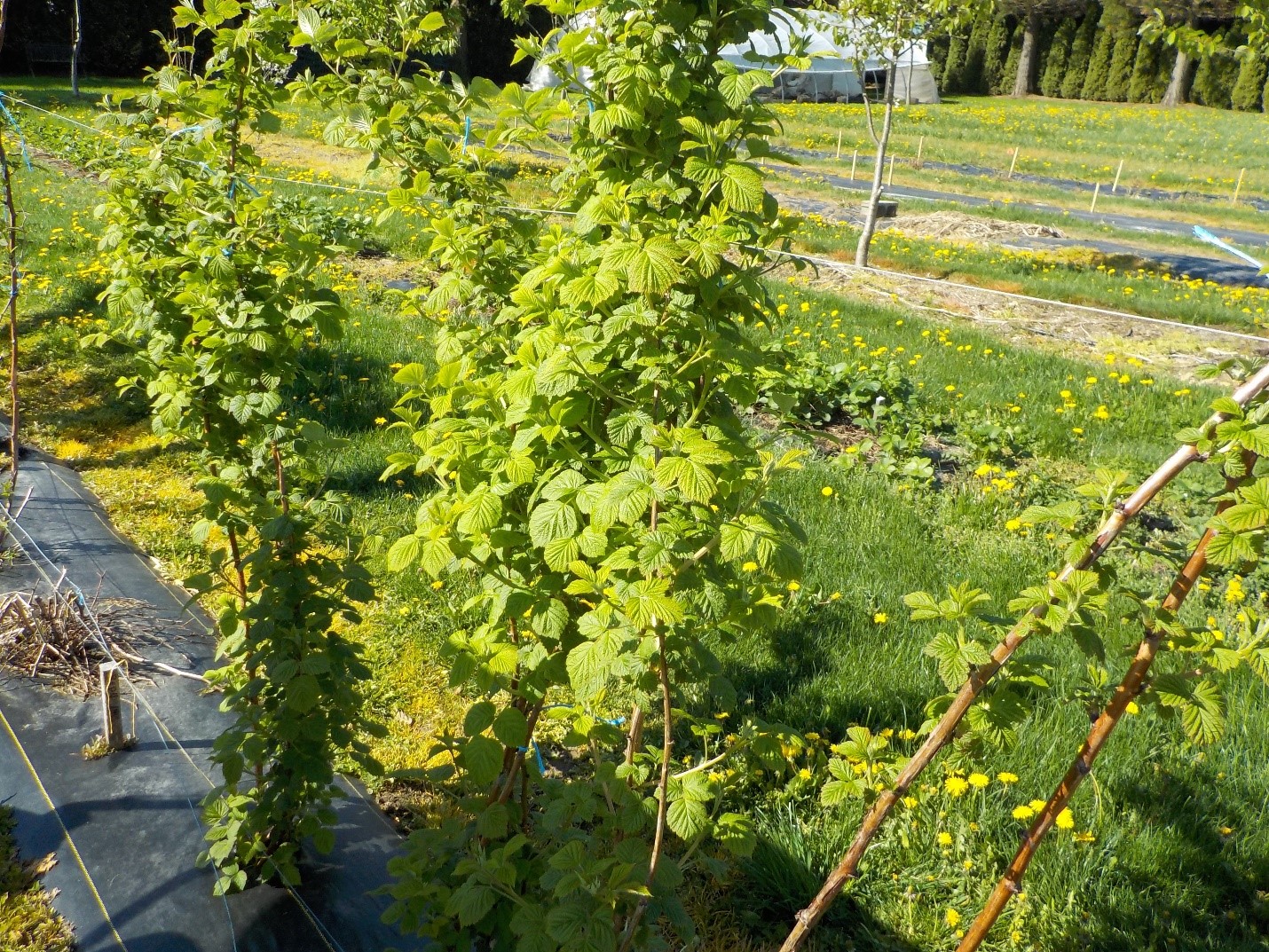Cascade Harvest
| Denomination: | 'Cascade Harvest' |
|---|---|
| Botanical Name: | Rubus idaeus |
| Applicant/Holder: |
Washington State University Office of Commercialization / Office of Research Lighty 280/286, PO Box 641060 Pullman, Washington 99164-1060 United States of America |
| Breeder: |
Patrick P. Moore, Washington State University Puyallup Research and Extension Center, Puyallup, United States of America |
| Agent in Canada: |
Expert Agriculture Team Ltd. 46420 Prairie Central Road Chilliwack, British Columbia V2P 6H3 Canada Tel: 604-795-2537 |
| Application Date: | 2016-03-29 |
| Provisional Protection:: | 2016-03-29 |
| Application Number: | 16-8841 |
| Grant of Rights Date: | 2021-11-02 |
| Certificate Number: | 6497 |
| Grant of Rights Termination Date: | 2041-11-02 |
Variety Description
Varieties used for comparison: 'Meeker' and 'Chemainus'
Summary: The plants of 'Cascade Harvest' have a medium number of current season's canes whereas those of 'Meeker' have very many and those of 'Chemainus' have many. The dormant canes of 'Cascade Harvest' are shorter than those of 'Meeker'. The spines for 'Cascade Harvest' are of medium length and density whereas the spines for 'Meeker' are long and dense; and the spines of 'Chemainus' are short and sparse. The upper side of the leaf of 'Cascade Harvest' is dark green while that of 'Meeker' is light green and that of 'Chemainus' is medium green. The leaf of 'Cascade Harvest' has predominantly five leaflets whereas the leaf of 'Meeker' has predominantly three leaflets. The fruiting lateral length of 'Cascade Harvest' is shorter than that of 'Meeker'. The fruit of 'Cascade Harvest' is of medium length whereas the fruit of 'Meeker' is short and that of 'Chemainus' is long. In lateral view, the fruit of 'Cascade Harvest' is medium conical whereas the fruit of 'Meeker' is circular. The drupe of 'Cascade Harvest' is large whereas that of 'Meeker' is small and that of 'Chemainus' is medium sized. The fruit of 'Cascade Harvest' has moderate adherence to the plug whereas 'Meeker' has very strong adherence. The fruit on the previous year's canes ripens early season for 'Cascade Harvest' whereas that of both reference varieties ripens late season.
Description:
PLANT: upright growth habit, medium number of current season canes, bears fruit only on previous season's cane in summer, mid-season vegetative bud burst
VERY YOUNG SHOOT: medium intensity of anthocyanin colouration of apex during rapid growth
FRUITING LATERAL: semi-erect attitude
CURRENT SEASON`S CANE: absent or very weak degree of bloom, absent or very weak intensity of anthocyanin colouration, medium to long internode, medium length vegetative bud
DORMANT CANE: brown
SPINES: medium density, small base, medium length, brownish purple
LEAF: dark green upper side, predominantly five leaflets, strong rugosity, relative position of lateral leaflets is free
LEAFLET: convex profile in cross-section
FLOWERING: begins early to mid-season on previous season's cane
PEDUNCLE: weak intensity of anthocyanin colouration
PEDICEL: few spines
FLOWER: medium size
FRUIT: begins ripening early on previous season's cane, medium length and width, medium length to width ratio, medium conical shape in lateral view, medium red, strong glossiness, medium firmness, medium strength adherence to plug, medium length of fruiting period on previous season's cane
DRUPE: large size
Origin & Breeding History: 'Cascade Harvest' (experimental designation WSU 1507) originated from a hand pollinated cross conducted by the breeder at the Washington State University Puyallup Research and Extension Center in Puyallup, Washington, USA. The cross was made in 1998 between the variety 'Cascade Dawn' and a proprietary variety designated WSU 1145. The new variety was selected in 2001, asexually propagated and further tested in grower trials in 2002, 2003, 2005 and 2010. 'Cascade Harvest' was selected for how well it machine harvests, fruit size and disease resistance.
Tests & Trials: The comparative trial for 'Cascade Harvest' was conducted at Expert Agriculture Team in Chilliwack, British Columbia during the 2019 growing season. The plots were planted in the spring of 2016 in an RCB Design. Each variety was planted in 4 replicates with 3 plants per replicate for a total of 12 plants of each variety. Plants were spaced approximately 76 centimetres apart within rows and 2.1 metres between rows. Measurements were taken from 10 plants or parts of 10 plants of each variety, except for the lenth of the fruiting laterals where 20 measurements were taken. Mean differences were significant at the 5% confidence probability level based on a paired Student's t-test.
Comparison tables for 'Cascade Harvest' with reference varieties 'Meeker' and 'Chemainus'
Dormant cane length (cm)
| 'Cascade Harvest' | 'Meeker' | 'Chemainus' | |
|---|---|---|---|
| mean | 311.7 | 405.38 | 360.43 |
| std. deviation | 47.90 | 80.66 | 60.74 |
Fruiting lateral length (cm)
| 'Cascade Harvest' | 'Meeker' | 'Chemainus' | |
|---|---|---|---|
| mean | 60.91 | 77.14 | 56.81 |
| std. deviation | 11.45 | 13.23 | 14.45 |
Click on image for larger view

Raspberry: 'Cascade Harvest'
Click on image for larger view

Raspberry: 'Cascade Harvest' (left) with reference varieties 'Meeker' (centre) and 'Chemainus' (right)
Click on image for larger view

Raspberry: 'Cascade Harvest' (left) with reference varieties 'Meeker' (centre) and 'Chemainus' (right)
- Date modified: